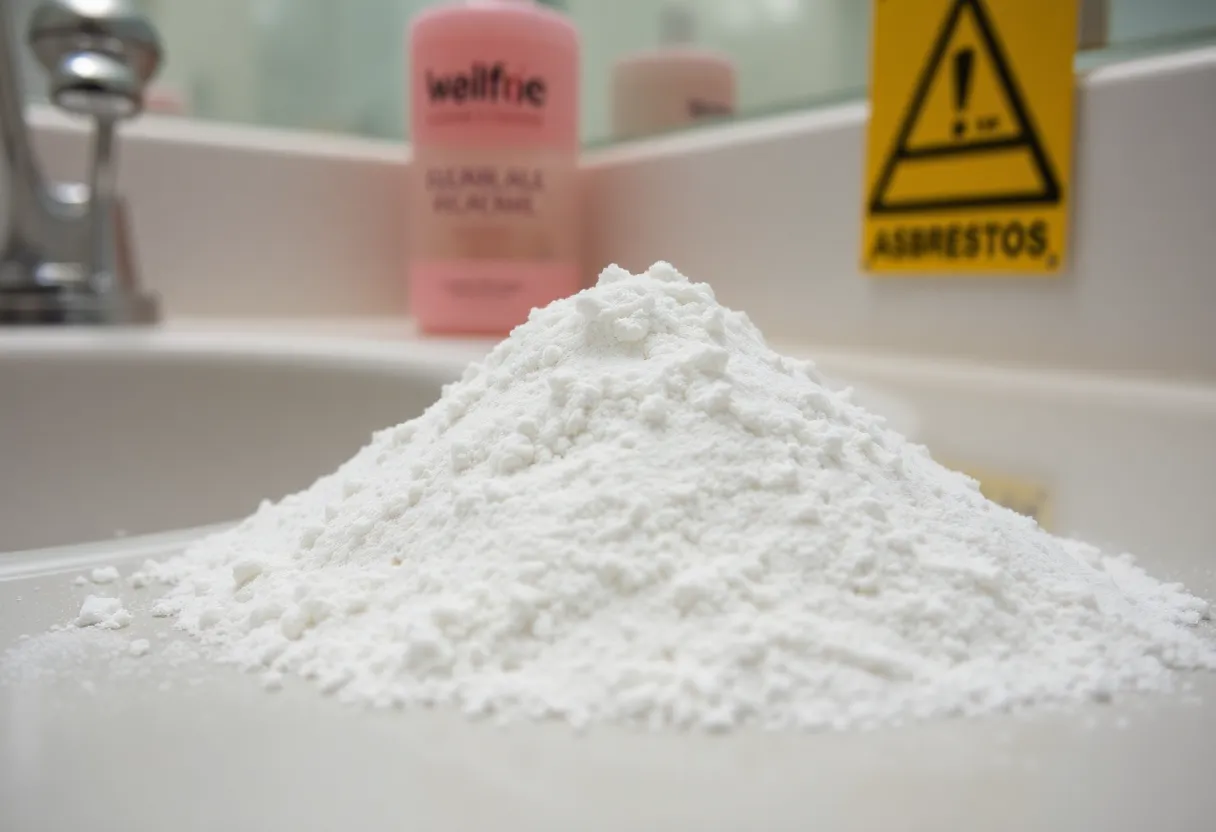News Summary
The FDA proposes new rules for testing talc products for asbestos in response to rising health concerns linked to cosmetic contamination.
The Fight Against Asbestos in Talc Products Intensifies
In a bold move to protect consumer health, the U.S. Food and Drug Administration (FDA) has proposed a new rule requiring cosmetics manufacturers that utilize talc to rigorously test their products for the presence of asbestos. This initiative emerges amid rising concerns regarding the harmful effects of talc, a mineral widely used in cosmetics and personal care items for its moisture absorption and texture-enhancing properties.
The Dangers of Talc and Asbestos
Talc serves essential functions in numerous products, from preventing caking to improving makeup opacity. However, not all talc deposits are safe. Many can become contaminated with asbestos during mining operations due to the close proximity of asbestos deposits. While chrysotile asbestos is known to pose risks, the FDA warns that certain forms, particularly tremolite and anthophyllite, are even more carcinogenic. Asbestos exposure is tied to severe health conditions including lung cancer, mesothelioma, and asbestosis, making the impending regulations critical for consumer safety.
Decades of Testing and Recalls
For years, the FDA has actively tested talc-containing cosmetics, utilizing advanced testing methods such as polarized light microscopy and transmission electron microscopy. Through these methods, the FDA aims to meticulously analyze samples and safeguard public health. As an alternative, manufacturers could opt to use certificates of analysis from talc suppliers to prove their products’ safety.
If this proposal comes to fruition, any cosmetics left untested or found to contain asbestos would be classified as adulterated under the Federal Food, Drug, and Cosmetic Act. This shift signifies a new chapter in the battle against consumer product contamination, ensuring that those using cosmetics enjoy peace of mind.
High-Profile Corporate Fallout
The scrutiny surrounding talc products has led to considerable controversy, especially involving major corporations like Johnson & Johnson. The company faced numerous lawsuits regarding its talc products, including baby powder, which allegedly led to ovarian cancer in users. Johnson & Johnson has seen its fair share of legal battles, agreeing to a staggering $700 million settlement over misleading marketing practices. The firm is reportedly looking to resolve a multitude of lawsuits tied to asbestos contamination claims involving its talc products with a proposed $8 billion settlement.
In a significant corporate shift, Johnson & Johnson removed its talc-based products from the North American market in 2020 and from global distribution in 2023, marking an end to an era of talc use in their consumer offerings.
The Ripple Effect of Regulatory Oversight
The FDA’s scrutiny isn’t an isolated incident. In 2019, the agency discovered asbestos in cosmetics sold by Claire’s Stores, prompting urgent recalls. Similarly, in 2024, Dynarex expanded a recall of baby powder due to potential asbestos contamination concerns. These incidents highlight the pressing need for stringent regulations to protect consumers from hazardous materials that could lead to devastating health issues.
Public Participation and Future Developments
The FDA is currently inviting public comments on the proposed rule until March 27, 2025, emphasizing the importance of public involvement in health and safety regulations. The proposed initiative serves as a crucial step towards ensuring that talc products remain safe for consumers amidst ongoing fears regarding asbestos presence in such cosmetics.
As awareness surrounding the dangers of asbestos exposure continues to grow, it is evident that regulatory changes are necessary. The fight against asbestos-related diseases, notably mesothelioma and other severe conditions like chronic obstructive pulmonary disease (COPD), remains a top priority for health officials. The FDA’s recent proposal is not just a regulatory effort; it is a commitment to ensuring that consumers can make informed choices about the products they use daily.
Deeper Dive: News & Info About This Topic
HERE Resources
U-Haul Faces Major Fines for Recklessly Exposing Workers to Asbestos
Akron Takes Bold Steps to Tackle Asbestos Issues and Revitalize Communities
U-Haul Faces Hefty Fine for Endangering Workers with Asbestos Exposure
Major U-Haul Facility Penalized for Asbestos Violations Endangering Workers
Legal Landscape Shifts Amidst Asbestos and Talc Product Litigation
America’s Controversial Asbestos Battle: A Phased Ban Begins
Community Support Rises for Mesothelioma Patients in March Meeting
Asbestos Flooring: The Hidden Danger Lurking in Your Home
Air Quality Concerns Heightened Following Wildfires in Los Angeles County
Wildfires in Pacific Palisades Raise Alarming Concerns Over Asbestos Exposure
Additional Resources
- CBS News: FDA Proposes New Rules for Talc Products
- Wikipedia: Asbestos
- Reuters: FDA Proposes New Talc Testing Standards
- Google Search: Talc Asbestos Health Effects
- PR Newswire: FDA Proposes Talc Testing Rule
- Encyclopedia Britannica: Talc
- Asbestos.com: FDA Tests for Asbestos in Talc Products
- Google News: FDA Asbestos Talc Products



















